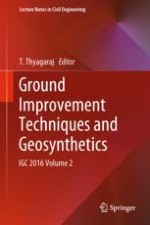2019 | OriginalPaper | Buchkapitel
A Study of Parameters Influencing Efficiency of Micropile Groups
verfasst von : Binu Sharma, Sushanta Sarkar, Zakir Hussain
Erschienen in: Ground Improvement Techniques and Geosynthetics
Verlag: Springer Singapore
Aktivieren Sie unsere intelligente Suche, um passende Fachinhalte oder Patente zu finden.
Wählen Sie Textabschnitte aus um mit Künstlicher Intelligenz passenden Patente zu finden. powered by
Markieren Sie Textabschnitte, um KI-gestützt weitere passende Inhalte zu finden. powered by
